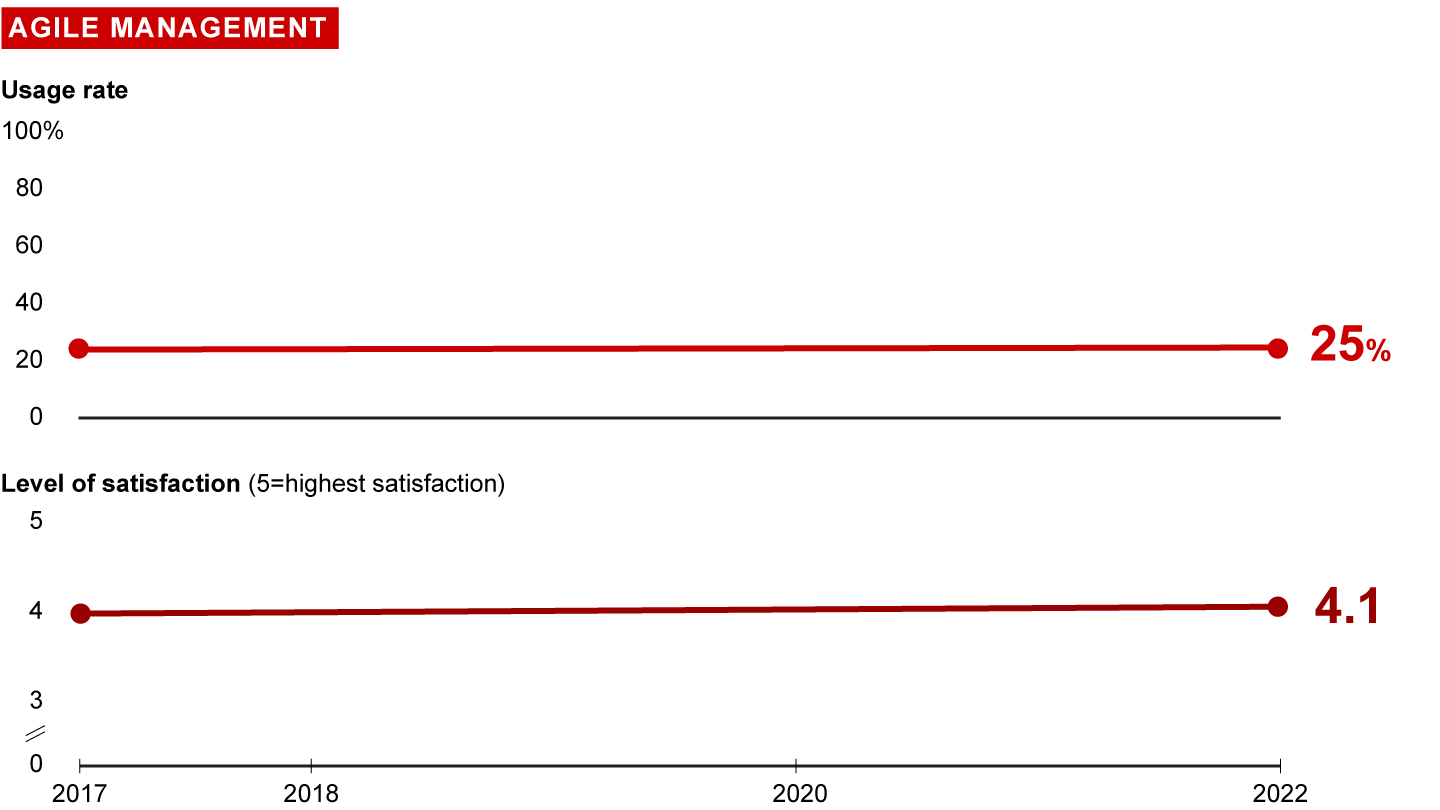Management Tools
What Is Agile Management?
Agile Management is an iterative approach to project management based on adaptive methods pioneered by Japanese manufacturers and popularized by software developers. Today, executives apply Agile project management techniques to a broad range of activities, including innovations in products and services, processes, and business models, in a wide variety of industries. Agile Management brings the most valuable innovations to market faster and with lower risk while improving team engagement and customer satisfaction. Scrum is the most common Agile Management approach, though methods such as Kanban, Lean Development, and Product Management are also common.


As companies become more mature in their Agile practices and scale agility to more areas, leaders may find they need to adapt many elements of their business, including:
- Developing leaders who deeply embrace Agile project management and lead by example
- Instilling Agile values everywhere, including operations and support functions
- Designing a customer-centric operating model supported by clear accountabilities, simple structures, decisive governance, and simple processes
- Defining a dynamic strategic planning and budgeting process to shift resources more quickly in response to change
- Adjusting hiring and talent management systems to attract and retain top talent
- Making technology systems more modular to allow frequent releases
How Is Agile Management Implemented?
How Agile Management works:
- The leadership team identifies and rigorously sequences the opportunities for Agile innovation.
- Executives assemble small, multidisciplinary, self-governing teams to address the top opportunities.
- An “initiative owner” works with the team to establish a vision, develop and perpetually prioritize a more detailed list of potential opportunities, figure out when and how to tackle those opportunities, and ensure tangible results. A process facilitator coaches the team in Agile methods, removes barriers, and accelerates progress.
- The multidisciplinary team creates a roadmap, breaks complex problems into more manageable tasks, and focuses on the most important opportunities. The team works in short, iterative cycles (often called sprints) to create working prototypes.
- Customers who are collaborating closely with the team test the working prototypes and provide clear and rapid feedback on their true preferences. The team then adapts its approach to capitalize on this customer feedback.
- The team continually identifies opportunities to improve its effectiveness.
Related Topics
What Are the Common Uses for Agile Management?
Companies use Agile Management to:
- Shift leadership’s time and focus from micromanaging to strategizing
- Frequently adapt their strategy to capitalize on changing conditions
- Increase focus and reduce multitasking
- Eliminate low-value work and other forms of waste
- Better manage change
- Cultivate breakthrough innovation in areas ranging from new product development and marketing to supply chain improvement

Management Tools & Trends 2023
On the 30th anniversary of our survey, managers seem surprisingly upbeat.